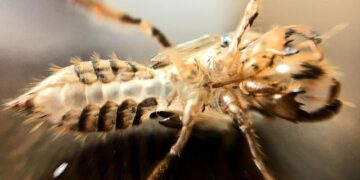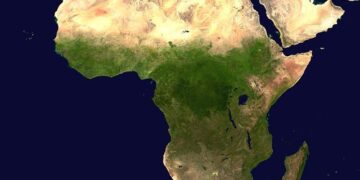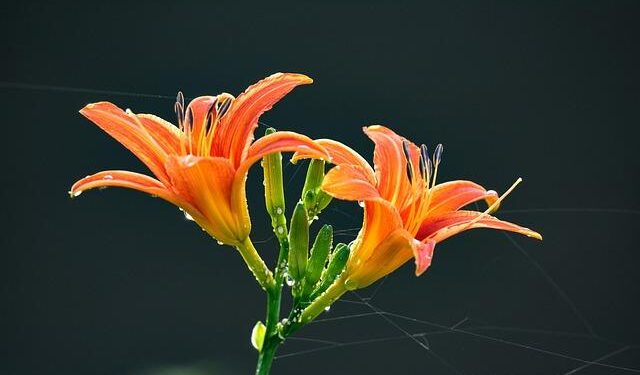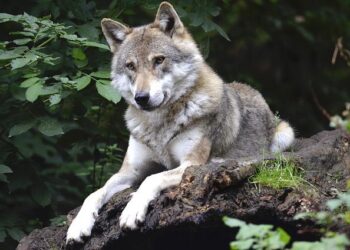Scientists have uncovered the world’s largest spiderweb inside the remote Sulfur Cave, an extraordinary underground chamber teeming with life in complete darkness. Housing an astonishing 111,000 spiders, this sprawling web network challenges previous understanding of arachnid behavior and adaptation in subterranean environments. The discovery, detailed in a recent Live Science report, offers new insights into how these creatures survive and thrive in one of the planet’s most extreme habitats.
Worlds Largest Spiderweb Found Inside Remote Sulfur Cave Housing Tens of Thousands of Arachnids
Deep within a remote sulfur cave, scientists have uncovered an astonishing natural phenomenon: a colossal spiderweb spanning over 30 meters, intricately woven by tens of thousands of arachnids. This labyrinth of silk threads, nestled in utter darkness, challenges previous notions about the limits of spiderweb construction and ecosystem complexity in subterranean environments. Researchers documented over 111,000 individual spiders inhabiting this subterranean marvel, showcasing an extraordinary example of collective animal behavior and survival in one of Earth’s most extreme habitats.
Key observations from the expedition include:
- Web coverage area exceeding that of a standard basketball court
- Diverse species composition, with at least five distinct types of spiders coexisting
- Adaptations to low-oxygen and sulfur-rich conditions thriving in pitch-black surroundings
The discovery not only sheds light on arachnid social structures but also raises intriguing questions about bioengineering strategies evolved by cave-dwelling organisms. The cave’s unique chemistry appears to play a critical role in the preservation and strength of the spider silk, possibly opening new avenues for biomimetic material research.
| Spider Species | Estimated Population | Web Position |
|---|---|---|
| Cave Orbweaver | 45,000 | Ceiling & Upper Walls |
| Silver Funnelweaver | 30,000 | Lower Walls & Floor |
| Sulfur Glow Spinner | 20,000 | Near Sulfur Deposits |
| Blind Cave Spitter | 16,000 | Darkest Chambers |
Unveiling the Ecosystem of a Pitch Black Spider Colony Thriving in Extreme Conditions
Deep within the confines of the sulfur-rich cave, a remarkable arachnid society flourishes in a realm devoid of light. This colony, containing an astonishing 111,000 pitch black spiders, showcases a uniquely adapted ecosystem that thrives under extreme conditions rarely hospitable to life. The spiders’ webs, intricately woven across cavernous walls, form a sprawling, interconnected network-the largest spiderweb ever documented. Amid toxic gases and scalding mineral deposits, these arachnids have evolved to hunt and reproduce with astounding efficiency, relying on specialized sensory adaptations to navigate the pitch black environment.
The stability and resilience of this spider colony are supported by a complex food web and survival strategies, including:
- Bioluminescent bacteria: which provide faint glimmers of light and attract prey species.
- Specialized silk: resistant to corrosive sulfuric elements and crucial for web integrity.
- Communal web-building: allowing rapid repair and expansion to accommodate population growth.
| Feature | Adaptation | Benefit |
|---|---|---|
| Vision | Reduced eyes, heightened vibrational sensing | Navigation in total darkness |
| Silk Composition | Sulfur-resistant proteins | Web durability maintained |
| Reproduction | High egg output with communal guarding | Population stability |
Protecting Unique Subterranean Habitats Critical for Preserving Rare Species and Biodiversity
Deep within the Sulfur Cave, scientists have uncovered an extraordinary ecosystem that underscores the necessity of safeguarding subterranean environments. Housing a staggering 111,000 spiders intricately woven into the world’s largest spiderweb, this habitat offers a rare glimpse into life thriving in absolute darkness. Such delicate ecosystems play a pivotal role in sustaining biodiversity, often harboring species that have evolved unique adaptations and cannot survive elsewhere. Protection efforts are vital not only to preserve these remarkable creatures but also to maintain the intricate ecological balance within these underground realms.
Preservation strategies must focus on several critical factors to ensure the longevity of such habitats, including:
- Minimizing human intrusion: To prevent habitat disruption and contamination.
- Monitoring environmental changes: Carefully tracking shifts in temperature, humidity, and chemical composition.
- Supporting scientific research: Encouraging studies that deepen understanding of subterranean biodiversity.
Below is a summary of key characteristics of the Sulfur Cave spider ecosystem:
| Aspect | Details |
|---|---|
| Spider Population | 111,000 individuals |
| Web Size | Largest known globally |
| Light Conditions | Complete darkness |
| Species Adaptation | Highly specialized for subterranean life |
The Way Forward
The discovery of the world’s largest spiderweb inside the Sulfur Cave, home to an astonishing 111,000 arachnids thriving in complete darkness, offers new insights into the adaptability and resilience of cave-dwelling species. This unprecedented find not only challenges our understanding of spider behavior and ecosystem dynamics but also highlights the hidden biodiversity within some of the planet’s most extreme environments. As researchers continue to study this remarkable habitat, the Sulfur Cave stands as a powerful reminder of the natural world’s capacity for surprise and wonder.































